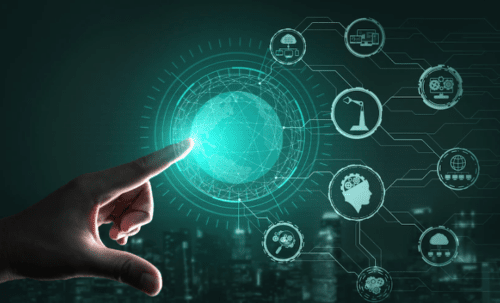Flexible work arrangements, especially working from home, are very common in the present generation. However, such a change presents new issues. A recent survey revealed that 53% of managers are burnt out. This statistic is rather worrisome and underlines that finding proper interventions for remote employees requires immediate attention.
As you grapple with these challenges, a powerful ally has emerged: AI—Artificial Intelligence. But how can AI help with burnout in remote work conditions? Here are some ways AI is transforming the remote work environment and supporting your employees.
Ways AI Reduces Remote Work Burnout
1. Workload Management and Task Automation
In the sphere of working from home, AI’s use in burnout prevention is a breakthrough. Perhaps the most notable area of AI’s contribution to mitigating burnout is by helping you manage workloads and automate tasks.
AI-assisted solutions can automate several monotonous activities that tend to cause burnout, including:
- Data entry and processing
- Email sorting and prioritization
- Basic customer service inquiries
- Scheduling and calendar management
Thus, AI helps save your employees a lot of time and mental effort, allowing them to devote more energy to critical and creative tasks.
In addition, AI’s capacity goes beyond mere mechanization. Sophisticated AI systems can study workload distribution among teams and departments and detect possible load concentration or uneven distribution.
This analysis helps distribute the workload so that no employee is overwhelmed. For example, AI can:
- Assess individual workloads and capacity
- Identify tasks that could be reassigned or delegated
- Suggest optimal task allocation based on skills and availability
This intelligent workload management significantly reduces the risk of burnout by preventing work overload and promoting a more balanced, sustainable work environment for your team.
2. Smart Scheduling and Time Management
AI excels in managing time, which is essential for avoiding burnout. AI-based scheduling solutions are not just limited to calendars but consider different aspects of scheduling for remote workers. These tools consider:
- Individual work patterns and productivity peaks
- Team availability and time zones
- Project deadlines and priorities
By taking these factors into account, AI can suggest optimal meeting times that minimize disruptions to focused work periods. This smart scheduling helps maintain productivity while reducing the stress associated with constant context-switching.
Furthermore, AI assistants can act as personal time management coaches for your employees. They can:
- Send reminders for scheduled breaks
- Suggest ideal times for deep work sessions
- Prompt employees to step away from screens and engage in brief physical activities
These AI-driven interventions improve work productivity and ensure employees take necessary breaks, which are crucial to their health and well-being in a work-from-home environment.
3. Personalized Support and Mental Health Resources
One of the most creative uses of AI in remote work is offering employee assistance programs and mental health services.
Chatbots and virtual assistants based on AI technology provide constant support and represent an anonymous line through which employees can report issues or get advice at any time. These AI systems can:
- Analyze communication patterns and sentiment in written communications
- Monitor work hours and productivity fluctuations
- Detect changes in behavior that might indicate stress or burnout
Based on these insights, AI can offer tailored interventions. For instance, it might:
- Suggest stress-reduction techniques like guided meditation or breathing exercises
- Recommend relevant articles or resources on managing work-related stress
- Connect employees with appropriate mental health professionals if needed
These AI-driven initiatives have proven to be highly effective. They help reduce burnout and enhance overall well-being and productivity.
Also Read: How Global Companies Can Attract and Retain Their Top Talent in 2024
How AI Enhances Remote Work Well-being
1. Improved Communication and Collaboration
Interpersonal communication and cooperation are significant in telecommuting for team cohesiveness and worker satisfaction. In this context, AI has a major impact on improving these aspects of remote work.
Automated translation tools are making communication easier in multicultural organizations. These tools can:
- Provide real-time translations during video calls
- Translate written communications instantly
- Offer culturally appropriate suggestions for communication
This capability enables all team members to communicate and collaborate effectively in their language of comfort, making the work environment more effective for you.
AI-facilitated virtual meeting platforms are also revolutionizing team interactions. These platforms use AI to:
- Generate automated meeting notes and action items
- Track participation levels and ensure equal speaking time
- Analyze sentiment during meetings to gauge team morale
These features contribute to productive meetings and allow you to notice emerging problems that, if left untreated, may turn into severe issues causing burnout.
2. Personalized Learning and Development
AI is revolutionizing how your employees learn and train for their jobs in remote environments, which is essential for keeping morale up and turnover down. Based on their skills, performance history, and career aspirations, AI can construct personalized learning trajectories.
This tailored approach ensures employees receive the following:
- Relevant training materials aligned with their career aspirations
- Skill development opportunities that match their learning style
- Continuous feedback on their progress
AI-powered coaching platforms take this a step further by offering real-time feedback and performance insights. These tools can:
- Analyze communication styles in emails and virtual meetings
- Provide tips for improving presentation skills
- Offer writing suggestions for clearer and more effective communication
This continuous, personalized feedback helps employees improve their professional skills, boost confidence and job satisfaction — key factors in preventing burnout — and maintain good health and well-being.
3. Work-Life Balance Promotion
It is important to avoid being overworked to prevent burnout, which is a common problem in remote work environments where the boundaries between work and home can blur. AI is emerging as a useful tool in promoting this balance.
AI assistants can help manage personal tasks, such as:
- Scheduling personal appointments
- Organizing to-do lists
- Setting reminders for personal commitments
By taking on these tasks, AI reduces the mental load on your employees, allowing them to focus better on work during work hours and disconnect more easily during personal time.
Additionally, AI tools can analyze employees’ communication and work patterns to solve problems regarding work-life balance. For example:
- If employees frequently email during their free time, AI may recommend time constraints
- If employees have not moved for several hours, AI could suggest they get up from their desks
- If employees’ work patterns exhibit overwork tendencies, AI could notify HR or recommend ways of managing their workload
According to a study, 86% of remote employees have experienced high levels of exhaustion, emphasizing the need for AI interventions to manage work-life balance more effectively.
Also Read: How Does Generative AI Hep in Enhancing Employee Experience?
Potential Concerns and Considerations
Despite AI’s positive impacts on diminishing burnout and increasing well-being, certain considerations should be made. Some employees may be concerned about losing their jobs or their privacy being invaded through AI use.
It is important to stress that AI is not an enemy seeking to depose your employees and take their jobs but a tool that assists them and you as employers. Organizations should be transparent about how AI is used and ensure employee data is protected. The idea is to have AI as an assistant to optimize the work process, not to have a fully automated workforce.
Conclusion
As you’ve explored, AI is revolutionizing the concept of working remotely, particularly in the fight against burnout and the promotion of well-being. From assigning tasks and organizing working hours to offering individual assistance and encouraging a healthy lifestyle, AI is transforming remote work.
As leaders, you may wonder how AI will impact remote work settings. Incorporating Artificial Intelligence into your organization’s operations makes it possible to design and implement a positive, effective, and sustainable remote workplace. This benefits individual employees and directly impacts the success of your organization in terms of productivity and employee retention.
While remote work still poses some challenges, the integration of AI can be seen as a solution to a healthier work life. By embracing these technologies responsibly and thoughtfully, you can harness AI’s full potential to create remote work environments where your employees don’t just survive but truly thrive.
Frequently Asked Questions
Q1. Can AI really detect signs of burnout in remote workers?
Yes, AI can analyze various data points such as work patterns, communication habits, and even written sentiments to identify potential signs of burnout in remote workers.
Q2. In what ways does work-life balance benefit from AI in a remote environment?
AI promotes work-life balance by optimizing schedules, suggesting breaks, managing personal tasks, and analyzing work habits to encourage healthy boundaries between work and personal time.
Q3. Can artificial intelligence pose a danger of replacing human labor in remote work areas?
While AI automates certain tasks, its primary role is to augment human capabilities, not replace them. AI is designed to support employees and improve their work experience, not to eliminate jobs.







